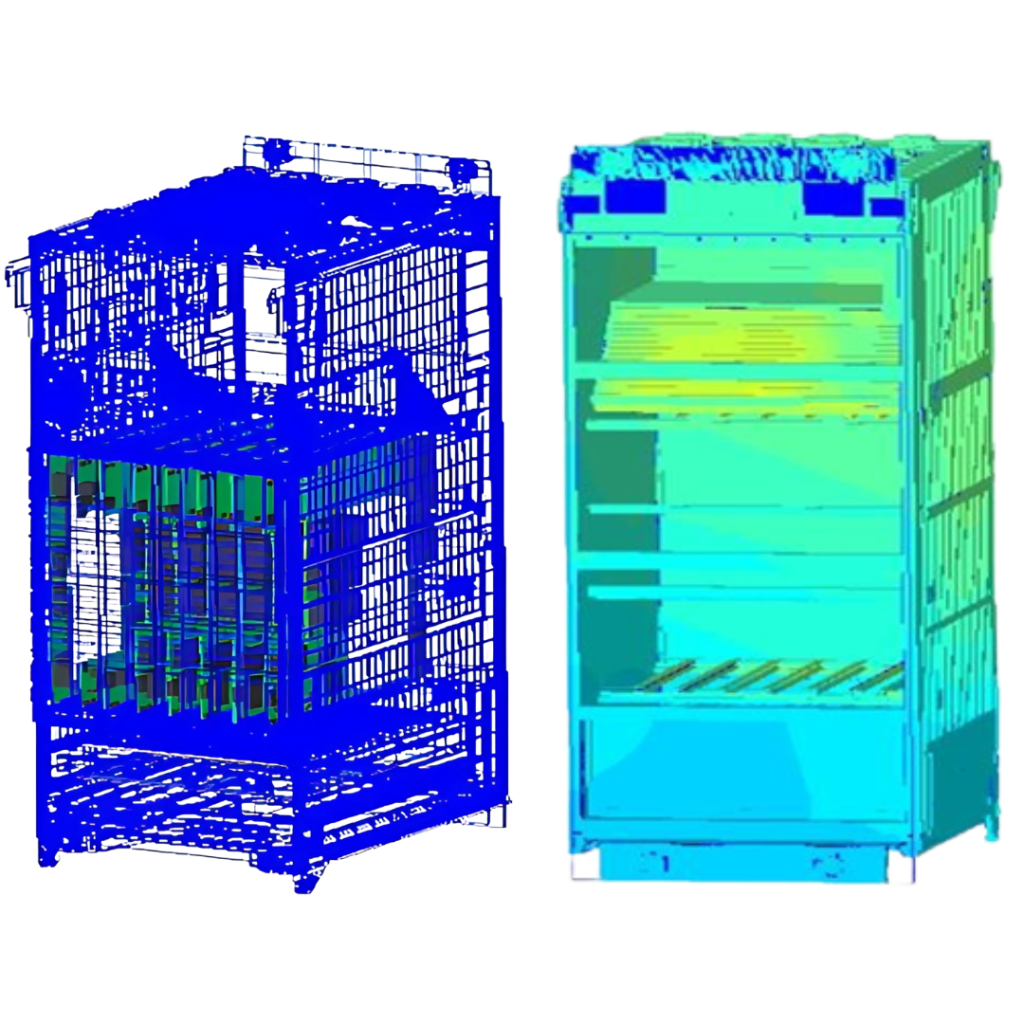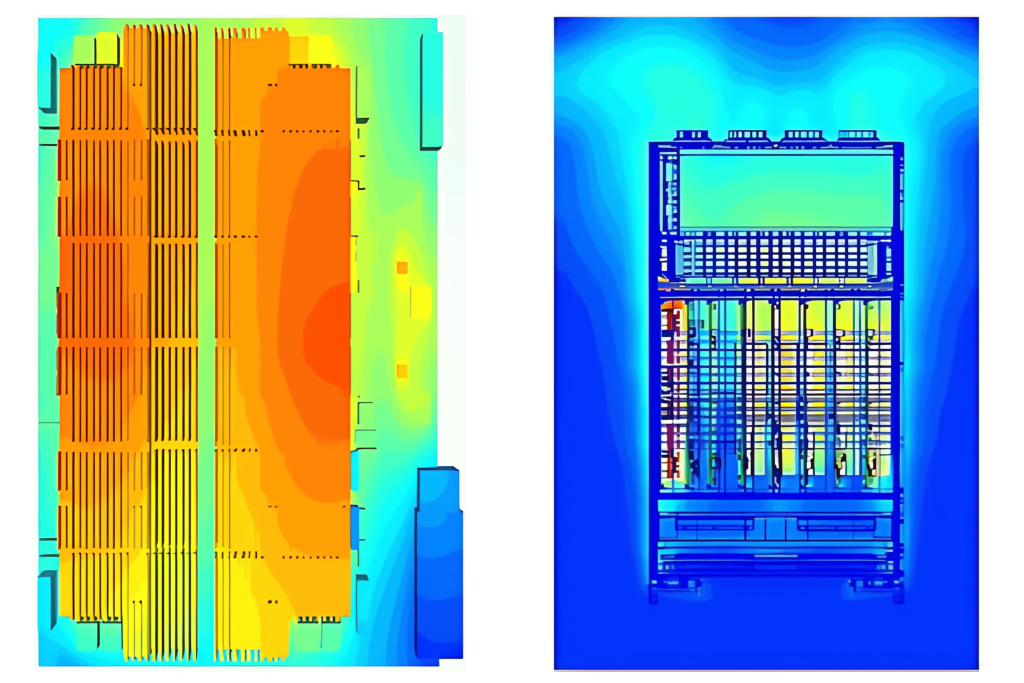Introduction
Current Electronic Systems are high density heat dissipating zones which require efficient cooling. It is very important that all components of the Electronic System receive adequate cooling so that the component temperature remains below the critical limits. The Electronic System design becomes more complex due to variable heat loads on different components. It is very important to predict the temperature at P-N junction of IC’s as overheating of electronic components may cause loss of data, malfunctioning of equipment which leads to catastrophic results. Also, it is very important to predict hot spots within electronic system and eliminate them. The performance of the Electronic System depends on the efficient cooling, and this can be achieved by CFD.
Challenges
- Modelling & meshing of small features for capturing flow passing through small gaps.
- Modelling of multiple fans.
- Design modifications in limited space of Electronic System.


SOLUTION
Flow and thermal analysis of electronic system was carried out at board level and system level. The main challenge in analysing the Electronic System was to mesh the geometry and account for heat load of various electronic components present in the system. Board level CFD analysis was carried out to determine the temperature at P-N junctions of IC’s. The temperature observed at the junction was within the range of acceptable limits. Then system level analysis was carried out for observing the performance of Electronic System under various failure scenarios like 1/2/3/4 fans fail. Also, the transient simulation of Electronic System was carried out for determining the time for which system can work without any issues.
BENEFITS
- Beforehand prediction of components & system performance under various scenarios.
- Quick turnaround time to fix existing problem of hot spots.
- Cost effective solution for reduced number of trials.
